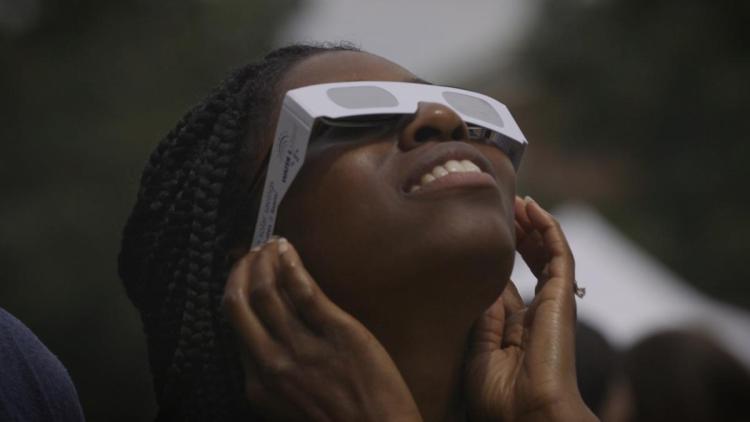
You should not look directly at the sun unless you wear protective eyewear. Visit Show Me Mizzou for eye safety tips from Frederick Fraunfelder, an associate dean and chair and professor at the MU School of Medicine’s Department of Ophthalmology.
Total solar eclipses like the one that will pass over portions of North America on Monday, April 8, are a delicate balance of cosmic mechanics and astronomical alignment.
University of Missouri astronomer Haojing Yan, an associate professor in the Department of Physics and Astronomy, has spent his career studying the stars and the universe, including using NASA’s James Webb Space Telescope (JWST) to discover the “Christmas Tree Galaxy Cluster.”
Below, Yan explains some of the science behind the eclipse.
Q: How frequently do total solar eclipses occur?
Most people don’t know this, but a total solar eclipse happens on Earth every 18 months or so. For a specific location, though, a total solar eclipse will only happen once every 360-410 years.
Q: Can you explain the phenomenon of the "diamond ring effect" and its significance during a total solar eclipse?
The moon’s surface is not smooth — it’s made of mountains and valleys. At the beginning of a totality, when the sun is just being blocked, some of its light will still come through the valleys around the moon’s visible surface. This makes it look like a shining diamond on a ring.
The phenomenon can also be seen at the end of a totality.
Q: What scientific discoveries or insights have been gained through studying total solar eclipses?
While many important discoveries have been made during total solar eclipses, two are considered as the most significant:
- Einstein’s theory of general relativity predicted that the path of light would be bent when glazing over a massive body due to its gravity. The first successful experiment to prove this theory was led by Eddington and Dyson during a total solar eclipse on May 29, 1919.
- The discovery of the element helium was made during a total solar eclipse in 1868.
Q: How has our understanding of the universe been enhanced through the study of historical total solar eclipses?
Total solar eclipses are helpful for scientists because they give us a unique chance to learn more about the sun, which is the closest star to us. By studying these eclipses, we can gather valuable information that helps us understand not just our sun, but also other stars out there.
Watch the eclipse
Monday, April 8, 2024
Noon-4 p.m. on Lowry Mall
Join the MU Extension and the Department of Physics and Astronomy to experience this astronomical event.